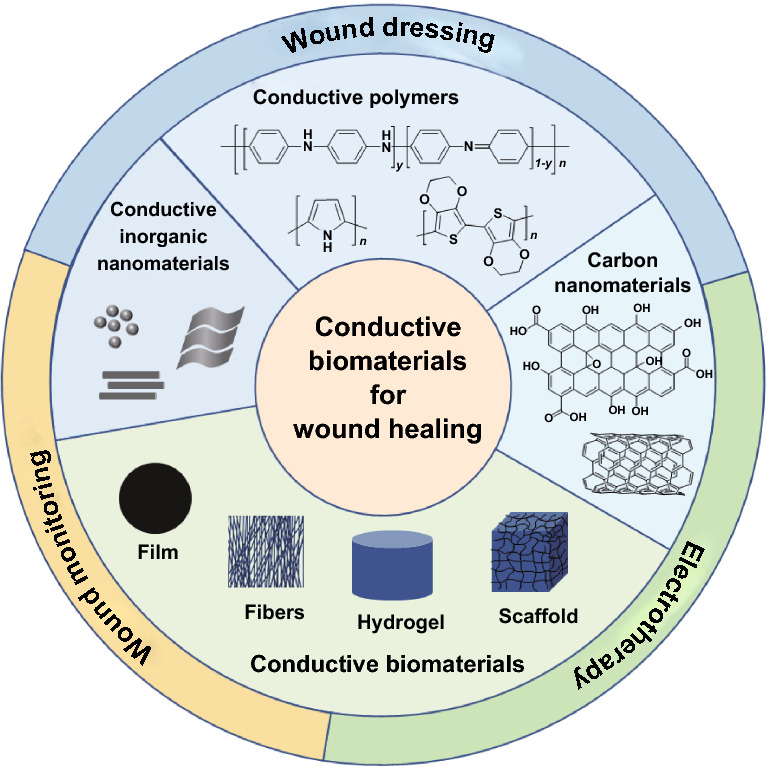- Record: found
- Abstract: found
- Article: found
Conductive Biomaterials as Bioactive Wound Dressing for Wound Healing and Skin Tissue Engineering

Read this article at
Abstract
-
The design and application of conductive biomaterials for wound healing are comprehensively reviewed, including versatile conductive agents, the various forms of conductive wound dressings, and different in vivo applications.
-
Three main strategies of which conductive biomaterials realizing their applications in wound healing and skin tissue engineering are discussed.
-
The challenges and perspectives in designing multifunctional conductive biomaterials and further clinical translation are proposed.
Abstract
Conductive biomaterials based on conductive polymers, carbon nanomaterials, or conductive inorganic nanomaterials demonstrate great potential in wound healing and skin tissue engineering, owing to the similar conductivity to human skin, good antioxidant and antibacterial activities, electrically controlled drug delivery, and photothermal effect. However, a review highlights the design and application of conductive biomaterials for wound healing and skin tissue engineering is lacking. In this review, the design and fabrication methods of conductive biomaterials with various structural forms including film, nanofiber, membrane, hydrogel, sponge, foam, and acellular dermal matrix for applications in wound healing and skin tissue engineering and the corresponding mechanism in promoting the healing process were summarized. The approaches that conductive biomaterials realize their great value in healing wounds via three main strategies (electrotherapy, wound dressing, and wound assessment) were reviewed. The application of conductive biomaterials as wound dressing when facing different wounds including acute wound and chronic wound (infected wound and diabetic wound) and for wound monitoring is discussed in detail. The challenges and perspectives in designing and developing multifunctional conductive biomaterials are proposed as well.

Related collections
Most cited references272
- Record: found
- Abstract: found
- Article: not found
Factors affecting wound healing.
- Record: found
- Abstract: found
- Article: not found
Antibacterial adhesive injectable hydrogels with rapid self-healing, extensibility and compressibility as wound dressing for joints skin wound healing
- Record: found
- Abstract: found
- Article: not found